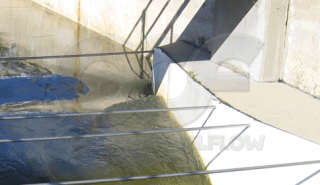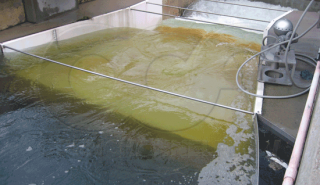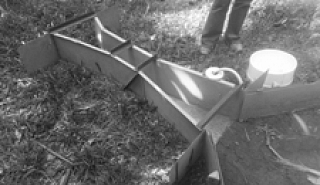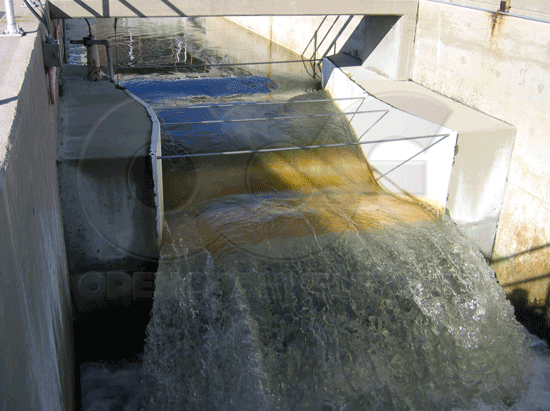 The most common method of transitioning flow from a channel into a Parshall flume is through the use of 45° inlet wing walls. The approach is straight-forward and the installation simple, but is it correct?
The most common method of transitioning flow from a channel into a Parshall flume is through the use of 45° inlet wing walls. The approach is straight-forward and the installation simple, but is it correct?
Wing walls are nothing more than formed transitions to direct flow into or out of a flume. The walls are flat or radius sections than extend from the channel walls to the flume entrance / exit, with the goal of diverting the flow into / out of the flume in a controlled manner.
Research by Blaisdell on the Waco W-10 72-inch [108.3 cm] Parshall flume showed that, under all flow conditions, 45° degree flat inlet wing walls generate a standing wave and a wave trough. This wave and trough were generated downstream of the intersection of the inlet wing wall and the flume.
As the flow rate increased, at heads above 60% of the flume’s depth, the standing trough extended far enough downstream to markedly affect (greater than 2%) the head readings. Further tests were conducted with radius wing walls tangent to the sidewalls of the flume. The curved wing walls eliminated the standing wave completely.
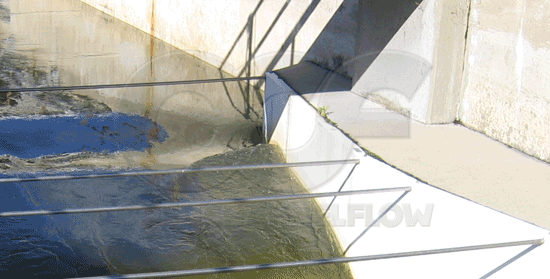
Blaisdell’s observation is backed by Parshall’s eventual recognition of the problem as evidenced in drawings in several papers. Parshall’s 1926, 1936, and 1941 papers show 45° inlet wing walls are shown for 3-inch [7.62 cm] to 96-inch [243.8 cm] flumes. In his 1950 paper, however, the inlet wing walls are curved (as they are again in his 1953 paper). It appears, then, that sometime during the 1940’s that Parshall recognized the need for curved / radius wing walls to suppress the standing wave / trough at the flume entrance.
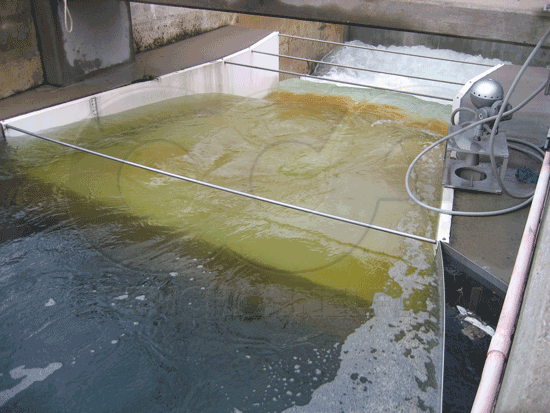
This wave and trough phenomena has also been observed in applications where the radius of a wing wall is smaller than that recommended. In this instance a new 96-inch Parshall flume (from another manufacturer) was supplied with inlet wing walls with a 20-inch [50.8 cm] radius (instead of the requisite 24-inch [60.96 cm]). The result was a standing wave / trough similar to that observed by Blaisdell that moved towards the point of measurement as flow rates increased. The field correction for the problem was an extension of flat wing walls that matched the angle of contraction of the inlet section of the flume. The extension of the angle of contraction greatly diminished the wave / trough to where it was no more prevalent than the standard surface variations of water approaching the flume. A difficulty in applying this approach is the need for potentially long inlet transitions - depending upon the distance from the flume to the channel walls.
Source:
Blaisdell, F., Results of Parshall Flume Test, Journal of Irrigation and Drainage Engineering, Vol. 120, No. 2, March / April 1994.



